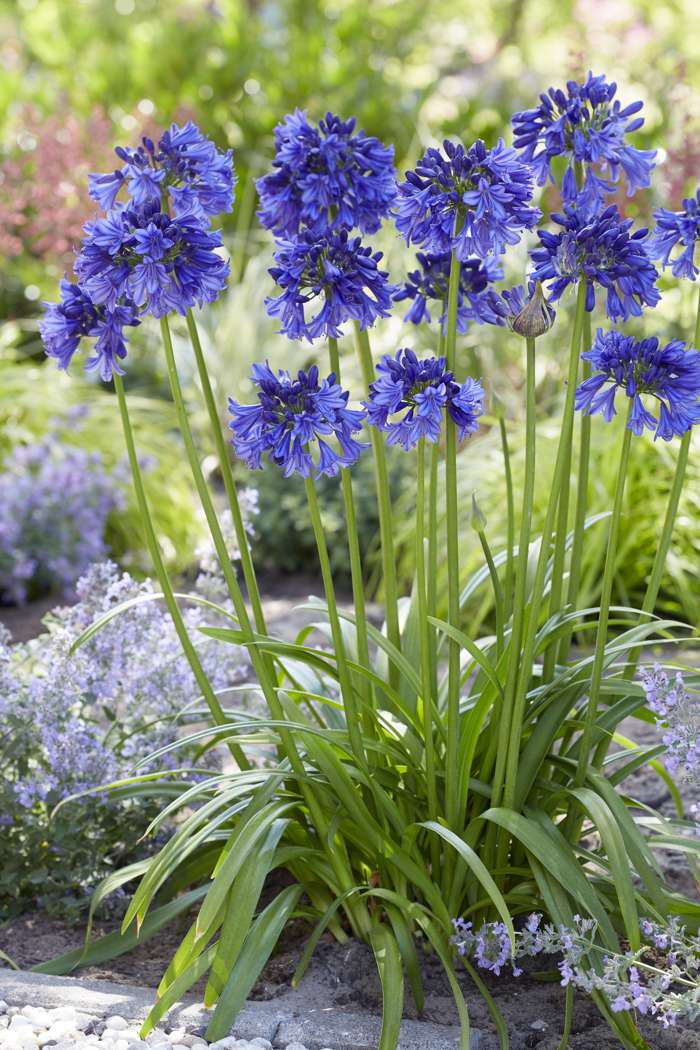Mastering the Art of Agapanthus Care: Vital Steps for Healthy Growth and Dynamic Flowers
In the realm of cultivation, the farming of agapanthus stands as a gratifying undertaking for those that seek to nurture these classy flowering plants. From selecting the best selection to understanding pruning methods, the trip in the direction of growing growing agapanthus plants is complex and holds the key to opening the full potential of these organic gems.

Picking the Right Agapanthus Selection

When picking the best Agapanthus range for your yard, think about factors such as climate viability, blossom shade, and development habit. Agapanthus, frequently called Lily of the Nile or African lily, comes in a selection of shades ranging from shades of purple and blue to white. Select a bloom shade that enhances your existing yard combination to create an unified landscape. Furthermore, think about the environment in your area to ensure the Agapanthus selection you select can thrive in your specific conditions. Some ranges are extra tolerant of cold temperature levels, while others choose warmer climates. Understanding the development routine of various Agapanthus ranges is vital for proper positioning within your yard. Some ranges have a clumping development practice, ideal for borders or containers, while others have a more dispersing nature, suitable for ground cover or mass plantings. By very carefully assessing these elements, you can pick the best Agapanthus variety to improve the elegance of your yard.
Ideal Planting Problems
Considering the optimum ecological requirements is important for successful Agapanthus growing. Agapanthus thrives in well-draining soil with a slightly acidic to neutral pH degree. When planting, pick a place that receives full sunlight to partial shade. In hotter environments, offering some afternoon shade can avoid scorching of the fallen leaves. Agapanthus plants are delicate to cool temperature levels and must be shielded from frost during winter months.
To ensure healthy development and dynamic blooms, plant Agapanthus light bulbs at a deepness of concerning 2-4 inches and space them 8-12 inches apart. Mulching around the base of the plants helps preserve wetness and reduces weed growth.
Watering and Fertilizing Tips
Preserving appropriate wetness degrees and offering crucial nutrients are essential components in the care regimen for Agapanthus plants. When it comes to sprinkling Agapanthus, it is vital to strike an equilibrium. These plants favor regularly wet soil but are susceptible to root rot if overwatered.
Feeding Agapanthus is vital for promoting healthy and balanced growth and respected flowers. Apply a well balanced plant food, such as a 10-10-10 formula, in the early springtime as brand-new development emerges. Repeat this application every 6-8 weeks throughout the expanding period. Stay clear of extreme fertilizing, as it can lead to lush vegetation at the expense of flowers. Always follow the maker's instructions for appropriate dilution and application methods. By following these watering and feeding suggestions, you can ensure your Agapanthus plants thrive and create vibrant, long-lasting blossoms.
Pruning Methods for Agapanthus
Trimming Agapanthus plants at the ideal times and with appropriate techniques is important for keeping their health and advertising optimal growth and blooming. The optimal visite site time to prune Agapanthus is in late winter months or early springtime before new growth arises.
Deadheading spent flowers can also redirect the plant's power right into producing more blossoms rather than setting seeds. If you want to collect seeds for proliferation, leave some flowers to completely dry and fully grown on the plant.
Keep in mind to make use of tidy, sharp tools to make accurate cuts and decrease the risk of introducing conditions. Agapanthus. Normal trimming will help keep your Agapanthus looking neat and healthy and balanced while guaranteeing a bountiful display of stunning blossoms
Taking Care Of Common Pests and Diseases
After making certain correct trimming methods for Agapanthus, it is vital to deal with usual insects and diseases that can affect the wellness and vigor of these plants. Agapanthus plants are generally durable yet can still drop target to certain problems. One typical insect that influences Agapanthus is the Agapanthus gall midget. This little, orange fly lays its eggs in the foliage, causing distorted growth and blossom buds that fall short to open up. To fight this pest, prune and ruin any affected plant parts and think about using insecticidal soap.
Another usual concern is fungal fallen leave spot, which presents as dark sores on the fallen leaves. To stop fungal diseases, make sure great air blood circulation around the plants, avoid overhanging watering, and remove any type of contaminated leaves without delay. Additionally, Agapanthus plants can experience origin rot if read the article they are planted in improperly draining soil. To avoid this, plant Agapanthus in well-draining dirt and avoid overwatering. By being watchful and taking prompt activity versus diseases and insects, you can aid your Agapanthus plants thrive and create dynamic flowers.

Conclusion
Finally, understanding the art of agapanthus care involves choosing the right selection, providing perfect planting problems, proper watering and fertilizing, appropriate pruning methods, and resolving typical insects and conditions. By following these navigate to these guys vital actions, you can ensure healthy and balanced growth and lively blossoms for your agapanthus plants. Bear in mind to on a regular basis monitor and preserve your plants to promote their overall health and durability.
To make sure healthy and balanced growth and vibrant flowers, plant Agapanthus light bulbs at a deepness of about 2-4 inches and room them 8-12 inches apart. By adhering to these watering and fertilizing pointers, you can ensure your Agapanthus plants prosper and generate dynamic, long-lasting blossoms.
One common bug that affects Agapanthus is the Agapanthus gall midge. Furthermore, Agapanthus plants can experience from root rot if they are planted in badly draining pipes dirt. By adhering to these crucial steps, you can make certain healthy development and vibrant blossoms for your agapanthus plants.